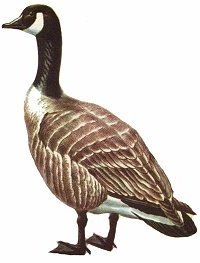Overview of Invertebrates
An invertebrate is any multicellular animal lacking a backbone. This includes all animal phyla other than Chordata. The major invertebrate phyla include:
- Sponges - Porifera
- Coelenterates - Cnidaria
- Ctenophores - Ctenophora
- Echinoderms - Echinodermata
- Flatworms - Platyhelminthes
- Roundworms - Nematoda
- Segmented worms - Annelida
- Mollusks - Mollusca
- Arthropods - Arthropoda
Invertebrates are tremendously diverse, ranging from microscopic wormlike mezozoans to huge animals such as the giant squid. Approximately 95% of all the earth's animal species are invertebrates; of these, the vast majority are insects and other arthropods. Invertebrates are important as parasites and are essential elements of all ecological communities.
Porifera - Sponges
Porifera is an animal phylum consisting of the organisms commonly called sponges. It is the only phylum of the animal subkingdom Parazoa and represents the least evolutionarily advanced group of the animal kingdom. All adult sponges are sessile (nonmotile), and nearly all are marine; there are four families of freshwater sponges.
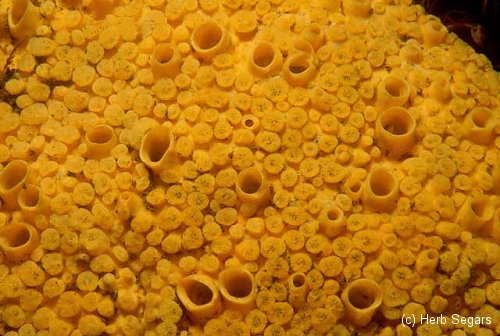
Sponges lack organs and tissue, and all the cells exhibit considerable independence. The sponge is made up of two single-cell-deep layers and an intermediate mesohyl (mobile cells plus extracellular matrix). The outer (sac) layer consists of flattened polygonal cells called pinacocytes. The middle (mesohyl) layer consists of gelatinous protein/carbohydrate material, a range of mobile cells, and a skeleton of calcareous or siliceous spicules, or of elastic proteinaceous fibers called spongin fibers. The inner layer consists of flagellated cells called collar cells, or choanocytes.
The body is permeated by numerous pores called ostia that open into inhalant canals that lead to the feeding chambers, which are made up of choanocytes; here also are large openings, termed oscules, fed by exhalant canals, that carry the water current from the choanocyte chambers to the exterior. The concerted whipping action of the choanocyte flagella creates a current of water from ostia through the sponge body oscules. The choanocytes filter plankton and small bits of organic detritus from the water and, like the pinacocytes, absorb oxygen. Food is digested in ameboid archaeocytes that pick up food vacuoles from the choanocytes, which ingest the mainly particulate food. Waste products are carried out through the osculum.
Sponges are limited in size by the rate at which water can flow in and out of the spongocoel, bringing in food-bearing water and oxygen and removing waste products. Because the asconoid type has the smallest surface area, sponges of this structure are among the smallest in the phylum; leuconoid sponges, with a large amount of surface area, represent some of the largest members of the phylum.
Pieces of sponge are able to regenerate into whole new sponges. Asexual reproduction occurs by budding or by fragmentation. The buds may remain attached to the parent or separate from it, and each bud develops into a new individual. Freshwater sponges, as well as several marine species, form resistant structures called gemmules that can withstand adverse conditions such as drying or cold and later develop into new individuals. Gemmules are aggregates of sponge tissue and food, covered by a hard coating containing spicules or spongin fibers. Sexual reproduction also occurs. Most sponges are hermaphroditic, the same individual producing eggs and sperm, but in some species the sexes are separate. The larvae are flagellated and swim about freely for a short time. After settling and attaching to a suitable substrate, the larvae develop into young sponges.
Cnidaria - Jellyfishes, Corals, Anemones & Hydroids
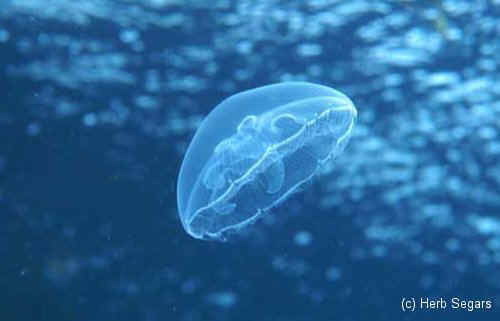
Cnidaria is a phylum of invertebrate animals comprising the sea anemones, corals, jellyfish, and hydroids. Cnidarians are radially symmetrical. The mouth, located at the center of one end of the body, opens into a gastrovascular cavity, which is used for digestion and distribution of food; an anus is lacking. Cnidarians are further characterized by having a body wall composed of three layers: an outer epidermis, an inner gastrodermis, and a middle mesogloea. Tentacles encircle the mouth and are used in part for food capture. Specialized stinging structures, called nematocysts, are a characteristic of the phylum and are borne in the tentacles and often in other body parts. These contain a coiled fiber that can be extruded suddenly. Some nematocysts contain toxic substances and are defense mechanisms, while others are adhesive, helping to anchor the animal or to entangle prey.
Two body forms and two lifestyles are characteristic of the Cnidaria. The sessile hydroid, or polyp, form is more or less cylindrical, attached to its substratum at its aboral (opposite the mouth) end, with the mouth and surrounding tentacles at the upper, oral, free end. Colonies of hydroids comprise several different types of individuals: some function in feeding, some in defense, and some in reproduction. The motile jellyfish, or medusoid form, is flattened, with the tentacles usually located at the body margin. The medusoid's convex aboral surface is oriented upward, and the concave oral surface is oriented downward.
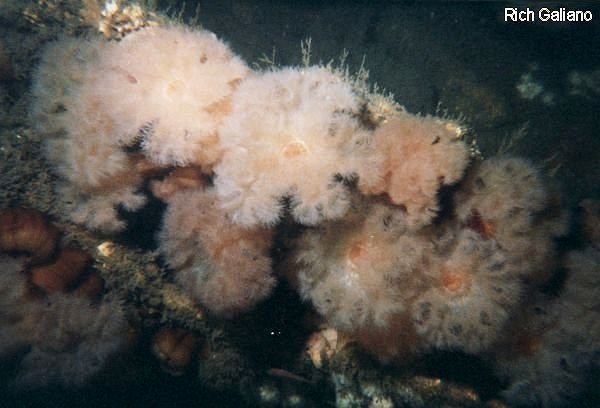
With few exceptions, the cnidarians are marine. There are over 9,000 known living species; fossil records of cnidarians date back to the Ordovician era. Cnidarians are carnivorous, the major part of their diet consisting of crustaceans. Animals in this phylum have no specialized excretory or respiratory organs and possess a primitive nervous system. Both sexual and asexual reproduction occur.
Ctenophora - Comb Jellies
Ctenophora is a small phylum of exclusively marine, invertebrate animals, commonly known as sea walnuts or comb jellies. Because they are so delicate that specimens are difficult to collect, little was known about them until the advent of blue-water scuba and submersible collecting. Ctenophores are characterized by eight rows consisting of ciliated plates called ctenes (combs), which are radially arranged on the spherical body surface. The animals swim weakly, powered by those structures. The two hemispheres of the ctenophore body are marked by a mouth, or oral pole, on the underside, and an opposite aboral pole, on which is located the statocyst, a unique sense organ controlling equilibrium.
Most ctenophores resemble biradially symmetrical jellyfish ( phylum Cnidaria ) but lack the cnidarian whorl of tentacles around the mouth. They lack the specialized stinging cells found in coelenterates, but one species incorporates those of its jellyfish prey for its own defense. Ctenophores, which are all carnivorous, have specialized adhesive cells called colloblasts, used to capture planktonic animals on which they feed. Approximately 50 species are known, but many become locally abundant and are ecologically significant. They vary from less than 1/4 inch to over 1 foot long. Most are transparent, but pale pinks, reds, violets, and oranges are also known in some species. Most ctenophores are also bioluminescent, the production of light originating in the walls of the eight canals. Most ctenostomes are hermaphrodites, developing through a cydippid larval stage to adults. They can also regenerate lost parts.

Echinodermata - Sea Stars, Sea Urchins & Relatives
Echinodermata is a phylum of exclusively marine bottom-dwelling invertebrates having external skeletons of calcareous plates just beneath the skin. The plates may be solidly fused together, as in sea urchins, loosely articulated to facilitate movement, as in sea stars ( starfish ), or reduced to minute spicules in the skin, as in sea cucumbers. The skin usually has warty projections or spines, or both. Echinoderms display pentamerous radial symmetry, that is, the body can be divided into five more or less similar portions around a central axis. Unlike other radially symmetrical animals, they develop from a bilaterally symmetrical larva and retain some degree of bilateral symmetry as adults. There is no head; the surface containing the mouth (the underside, in sea stars, and most others) is called the oral surface, and the opposite side, which usually bears the anus, the aboral surface. There are five living classes of echinoderms.
The radially symmetrical body cavity contains a system of water-filled canals unique to echinoderms. Called the water-vascular, or ambulacral, system, it connects with the tube feet, or podia, which are extensions of the body wall that generally protrude through holes in the skeleton. The areas with such holes are called ambulacra. The tube feet often have suction cups on their tips and are used for locomotion in most echinoderms; they also function in feeding, respiration, and sensory reception.
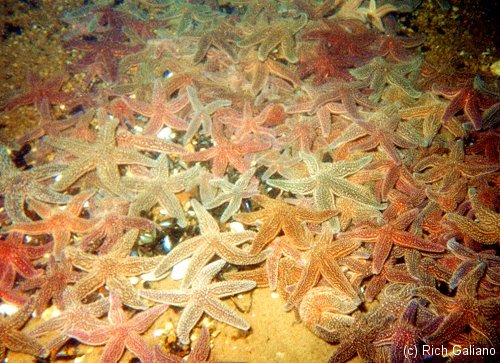
The water-vascular system consists of a circular passageway, the ring canal, that surrounds the digestive tract, and five radial canals that radiate from the ring canal-like spokes of a wheel. Each radial canal underlies an ambulacral area. The ring canal is usually connected to a porous plate in the body wall, the madreporite, by a lime-walled tube called the stone canal. The position of the madreporite varies in the different groups. Seawater enters the system through the madreporite, which is regulated by the animal. Short lateral canals equipped with valves lead from the radial canals into the tube feet. Generally, a muscular, water-filled bulb, the ampulla, is connected to each tube foot. When the valve closes and the ampulla contracts, water is squeezed into the tube foot, causing the foot to extend. The foot is retracted by the contraction of the attached muscles, thereby forcing the water back into the ampulla. Sea stars, sea cucumbers, and sea urchins move by alternately extending and retracting groups of tube feet, gripping with the suction cups, and pulling themselves along. Because the tube feet are very thin-walled, their surface is suitable for the diffusion of oxygen into the body cavity and the diffusion outward of carbon dioxide and wastes.
The tube feet perform at least part of the respiratory function in most echinoderms; however, many groups have developed auxiliary respiratory structures. Echinoderms have no special excretory organs. Circulation occurs in an open system of channels and sinuses and in the body cavity, which is lined with flagellated cells that create an internal current. The cavity contains large phagocytic cells (amoebocytes) that function in the transport of food and the storage of insoluble wastes. There is a simple nervous system sensitive to temperature, light, and vibrations, with the various body projections serving as sensory receptors. Echinoderms have extensive powers of regeneration of lost or injured parts.
Most species reproduce sexually, and species have separate sexes. Fertilization is external; the gametes are simply shed into the water at spawning time. The floating embryo develops into a ciliated, free-swimming, bilaterally symmetrical larva, which undergoes metamorphosis into the radially symmetrical adult.
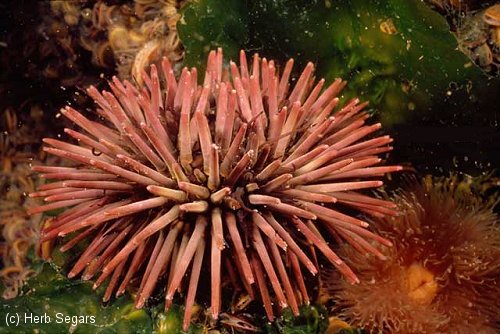
Worms
There are many creatures that are all known as "worms" that are not closely related. The three classifications below are different phyla that are no more similar to each other than fish and birds.
Platyhelminthes - Flat Worms
Platyhelminthes or flatworms are a phylum containing about 20,000 species of soft-bodied, bilaterally symmetrical, invertebrate animals, commonly called flatworms. There are four classes: the free-living, primarily aquatic class, Turbellaria, and Trematoda, Cestoda, and Monogenea, which are considerably modified for their exclusively parasitic existence. While the structure of the flatworms marks a major step in animal evolution, their origin and relationships within the group are still controversial.
Nematoda - Round Worms
Nematoda or roundworms is a phylum consisting of about 12,000 known species and many more predicted species of worms. Nematodes live in the soil and other terrestrial habitats as well as in freshwater and marine environments. Many are damaging parasites of plants and animals, including humans. The elongated, unsegmented nematode body is covered by a thick cuticle. The head is poorly developed; the mouth or pharynx may contain teeth or stylets used to pierce plant or animal tissues. The straight stomach-intestine ends in a short rectum. Nematodes have a unique excretory system consisting, in simpler species, of one or two one-celled glands called renette cells and, in more highly specialized forms, of longitudinal excretory ducts.
Annelida - Segmented Worms
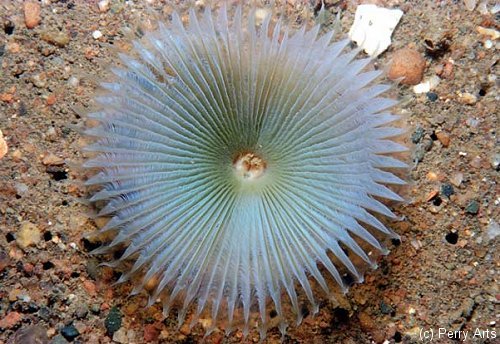
Annelida is a phylum of soft-bodied, bilaterally symmetrical, segmented animals, known as the segmented, or annelid, worms. Over 12,000 known species are grouped into three classes: the earthworms and freshwater worms (oligochaetes), the leeches (hirudineans), and the marine worms (polychaetes). Annelids are found throughout the world, from deep ocean bottoms to high mountain glaciers. They live in protected habitats such as mud, sand, and rock crevices, and in and among other invertebrate animals, such as sponges. Many live in tubes they secrete around themselves.
The fundamental characteristic of the phylum is the division of the body into a linear series of cylindrical segments, or metameres. Each metamere consists of a section of the body wall and a compartment of the body cavity with its internal organs. The external divisions, which may be seen in the common earthworm, correspond to the internal divisions. The annelid body consists of a head region; a trunk made up of metameres; and an unsegmented terminal region called the pygidium. In some primitive members of the phylum the metameres are identical, or very similar to one another, each containing the same structures; in more advanced forms there is a tendency toward a consolidation of some segments and a restriction of certain organs to particular segments. Because of the soft nature of the annelid body, fossils are not common. Fossils of tube-dwelling polychaetes have been found, but there is scarcely any fossil record for earthworms and none for leeches.
Mollusca - Snails & Bivalves

Mollusca is the taxonomic name for one of the largest phyla of invertebrate animals ( Arthropoda is the largest ) comprising more than 50,000 living mollusk species and about 35,000 fossil species dating back to the Cambrian period. Mollusks are soft-bodied, and most have a prominent shell. The members of this highly successful and diverse phylum are mostly aquatic and include the familiar scallop, clam, oyster, mussel, snail, slug, squid, cuttlefish, octopus, chiton, and a variety of others. Mollusks occupy habitats ranging from the deep ocean to shallow waters to moist terrestrial niches. Certain mollusks, such as clams, squids, and scallops, constitute important food staples, and molluscan shells are highly valued by collectors. In times past these shells were used as money and today are used ornamentally for such items as buttons and jewelry. There are six classes of mollusks.
Although highly diverse, all members of the phylum share certain general features. Most have a well-developed head, which may bear sensory tentacles; in some, like the clam, the head is very reduced. All mollusks possess a flexible body wall, which surrounds a body cavity containing the internal organs. The wall, which varies greatly in shape in different species, is usually folded to form a structure called the mantle, which is attached at the top of the body and surrounds it like a tent; the shell is formed on the outside of the mantle. On the underside of the body, the wall is usually stretched out to form a thickened mass called the foot. The wall is covered by an outer epidermis and an underlying dermis. The epidermis usually contains gland cells that secrete mucus, which in mollusks has a variety of important uses, such as locomotion, food entrapment, and prevention of water loss. Muscle tissue is found in the body wall and is particularly plentiful in the foot, which is used for locomotion in most mollusks, although some swim and some are sedentary, and in the mantle in species with reduced shells.
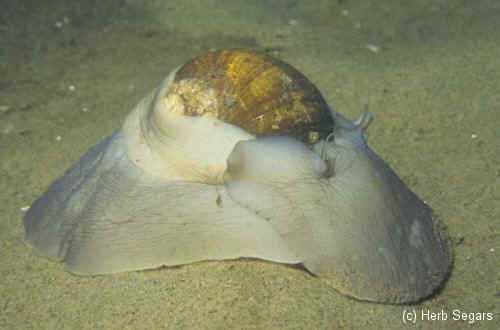
The shell is formed by secretions of glandular cells in the mantle. Except in the chitons, the shells of all mollusks are basically similar, differing only in certain mineralogical details. The shell is composed of an outer, prismatic layer containing densely packed cells of calcareous material secreted by the edge of the mantle; and an inner, nacreous layer of thin, laminated plates of calcareous material laid down by the entire mantle surface. When very thin, the nacreous lining of the shell is pearly and iridescent. Layers of this material may form around a grain of sand or other irritant that lodges between the mantle and the shell; this process eventually forms a pearl. Pearl oysters of the genus Pinctada are the most commercially important pearl formers.
Arthropoda - Crustaceans, Insects, etc
Arthropoda is the largest and most diverse animal phylum. The arthropods include crustaceans, insects, centipedes, millipedes, symphylans, pauropodans, and the extinct trilobites. Arthropods are characterized by a segmented body covered by a jointed external skeleton or exoskeleton, with paired jointed appendages on each segment; a complex nervous system with a dorsal brain, connective nerves passing around the anterior end of the digestive tract, and a ventral nerve cord with a ganglion in each body segment; an open circulatory system with a dorsal heart into which blood flows through paired openings (ostia); and a greatly reduced body cavity (coelom). Because the jointed exoskeleton blocks the growth of the organism, it must be shed periodically. This phenomenon, called molting, or ecdysis, is a characteristic feature of the phylum; it permits rapid growth in size and significant change in body form until the new exoskeleton, secreted by the animal, has hardened. Arthropods are mainly terrestrial, but aquatic representatives are well known.
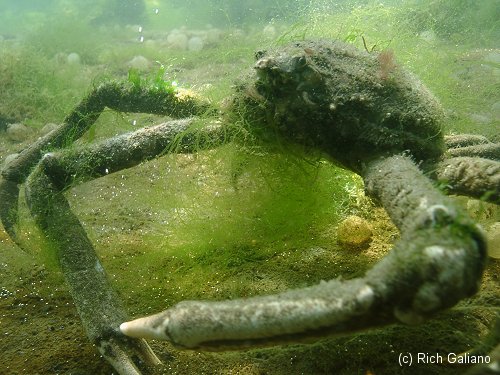
Members of class Crustacea are characterized by two pairs of antennae and two pairs of modified appendages (maxillae) used for food handling. Most of the 44,000 crustacean species are marine, but there are many freshwater forms. The few groups that inhabit terrestrial areas have not been particularly successful in an evolutionary sense; most require very humid environments in order to survive.
Crustaceans can be divided according to size into two main groups. The larger group, which is divided into the classes Branchiopoda, Copepoda, Ostracoda, and Cirripedia, includes the familiar shrimp, crayfish, lobsters, and crabs. The smaller group includes species that are either microscopic or range up to a few inches in size. Most of the smaller marine forms can be found in plankton and thereby occupy an important position in the marine food chain. Other copepods supply food for small fish, and still others exist as parasites on the skin and gills of fish. Best known of the smaller freshwater crustaceans are members of the genus Daphnia (water fleas), the fairy shrimp ( a phyllopod that swims inverted ), and Cyclops ( a copepod ). The order Isopoda includes the only large group of truly terrestrial crustaceans. Known as woodlice, sowbugs, or pillbugs, these small animals can be found under the bark of trees, beneath stones and rocks, and in other damp places. When disturbed they curl up armadillo-like, withdrawing into the exoskeleton.
All crustaceans have bilaterally symmetrical bodies covered with a chitinous exoskeleton, which may be thick and hard ( as in the crayfish ) or delicate and transparent ( as in water fleas ). The cuticle of crustaceans, unlike that of other arthropods, contains calcium deposits. Since it does not grow, the exoskeleton must be periodically molted when the animal undergoes metamorphosis ( typically from free-swimming larva to adult ) or simply outgrows its shell.
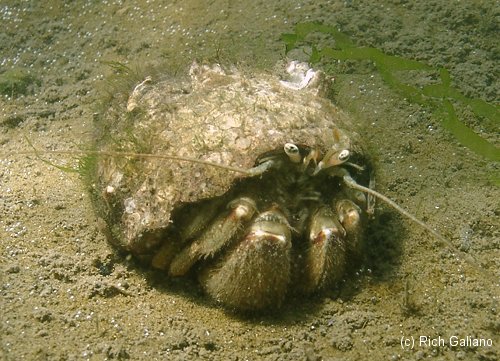
The free-swimming larva characteristic of crustaceans, called a nauplius, has an unsegmented body, a median eye, and three pairs of appendages. As a rule, they pass through a complex set of molts during development, involving a series of larval stages. More appendages are added as the organism passes through its developmental molts. Like other arthropods, adult crustaceans have segmented bodies and jointed legs; the segments are usually grouped into a recognizable head, thorax, and abdomen. In the majority of larger crustaceans, the head and thorax are fused into a cephalothorax, which is protected by a large shield-like area of the exoskeleton called the carapace. The head bears two pairs of antennae, usually one median eye and two lateral eyes, and three pairs of biting mouthparts - the mandibles and the two pairs of maxillae.
Crustacean appendages have undergone extensive adaptation for various tasks such as swimming, sensory reception, and walking. Many species have the first pair of thoracic appendages modified into claws and pincers. The thoracic region typically bears walking legs (pereiopods), also used for capturing prey. The abdominal region often is equipped with swimmerets (pleopods) and a tail fan made up of a pair of appendages (uropods) and the telson. The gills are generally attached at the bases of the thoracic appendages, and the beating of the appendages creates a flow of water over the gills that facilitates respiration. Reproduction is sexual, and in most forms the sexes are separate. In many species, the eggs are brooded beneath the abdominal segments of the female. Their excretory organs are modified nephridia, as a rule producing a dilute urine that contains a great deal of ammonia.
Crustaceans are herbivores, carnivores, or scavengers and are often vital elements of the food chain. Some, such as lobsters, shrimp, and crayfish, are important economically as edible shellfish. Barnacles are notorious as fouling organisms of ship bottoms and harbor installations. Some crustaceans are significant parasites of other aquatic organisms.
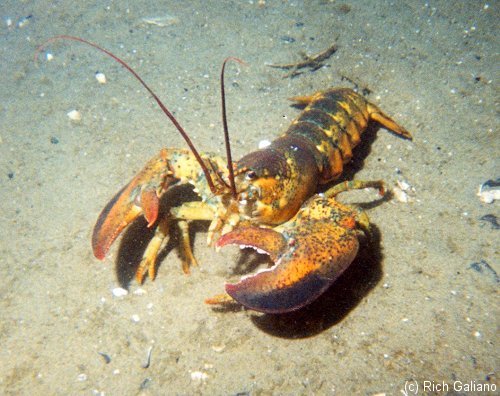
Compiled from various sources

